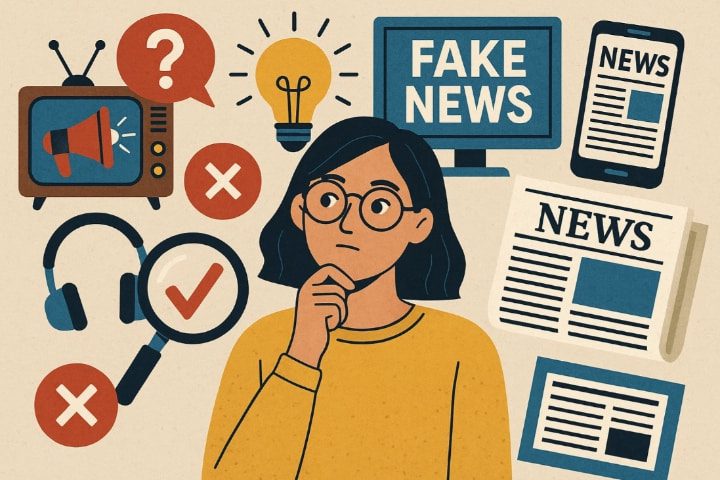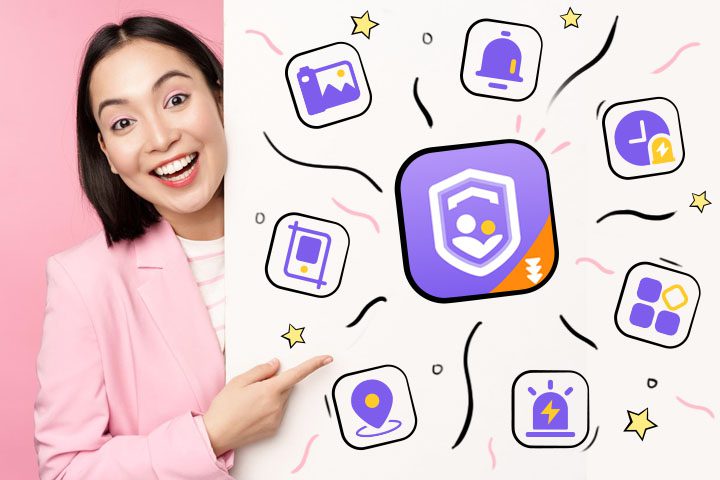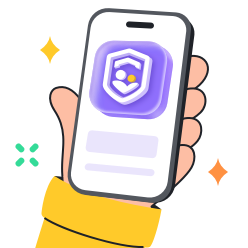In a rapidly evolving digital society, media literacy is essential. Every day, human beings are exposed to news, social media, advertisements, and entertainment. However, not everyone is able to distinguish fact from fiction. Many do not have the necessary knowledge to be able to critically evaluate content. So, this guide addresses the concept of media competency, why it is necessary and the ways in which digital literacy skills can be developed among all ages.
What is media literacy?
Media literacy is the capability to receive, evaluate, analyze and create media content in a responsible way. It does not only involve video watching and article reading but also knowing the origin, the reason and the effect of what is taken. It is possible to become media literate by learning to seek credible information, scrutinize statements, and accept the underlying agendas of messages.
Media literacy is fundamentally a matter to do with critical consumption of any media, such as news articles, social media posts, advertisements, films, and others. It gives the users the ability to recognize misinformation, propaganda and bias. Here is how you can define media competency:



- The ability to correctly receive different media messages.
- The ability to interpret and see the intent of the creator.
- The skill of measuring the dependability and validity of information.
- The ability to understand media in an ethical and prudent way.
Key elements of media literacy
There are a number of essential components of media literacy skills. These offer a guideline to perceiving and interacting with media material in a critical way. The key components include:
- Access: This involves information on where one can get news, entertainment and social sites.
- Analyze: The analysis of media messages is important. This aspect is involved in deconstructing the content in order to know what it actually means and the motive behind the creation. These forms of analysis involve tone, bias, and perspective detection. As an example, an article about news may be biased in a certain political opinion. To the media analysts, the question is: What are the facts being brought out? Is essential information lacking? Is it a language-neutral or emotive language?
- Evaluate: The evaluation task is the assessment of the quality and the reliability of media content. It consists of the process of comparing facts to other sources and paying attention to the credibility of the creator. Assessment is also a part of being conscious of emotional appeal or misleading imagery that can deviate reality.
- Dissemination: The idea of media literacy not only deals with consumption, but also production. The responsible production of media relates to dissemination of correct information, copyright and the negative stereotypes. Conscientious creators know the effects of their messages on audiences. Moreover, producing content with integrity strengthens the entire media environment by introducing credible voices.
- Act: The last stage in information literacy is taking action. It involves getting into discussions, reporting false news, lobbying for better media laws, and promoting ethical journalism. Active media citizens are not passive consumers of material but they contribute towards the construction of media culture in a positive way.
What is the difference between digital literacy and media literacy?
Digital and media literacy are terms that are used interchangeably but do not imply the same thing. The difference between the two should be understood in order to make it clear why the two skills are essential.
The concept of digital literacy is an ability to utilize digital devices, software, and online platforms to a good effect. It comprises basic computer literacy, knowledge on how to navigate the internet, use email, social networking, and applications safely. Digital literacy includes matters like the use of strong passwords, privacy issues, and cybersecurity warning signs.
Information literacy concentrates on the content being broadcast on either digital or traditional media. It is about the way individuals perceive, interpret and critically approach information disseminated in the media. Digital literacy helps users to think about the intention of the messages, to detect misinformation and to judge sources.
In simple terms, Digital literacy focuses on how technology is used, while media literacy focuses on what the message is and why it exists. They are both essential in the modern globalized society.
Use parental controls to improve your teens’ media literacy’ online behaviors.
Why media literacy is important in today’s digital era?
The threats in the digital arena have increased, leading to media literacy becoming more important than ever.
- Increasing disinformation: Fake news, conspiracy theories, and doctored pictures go viral on the Internet. Social media outlets tend to make hypocritical or exaggerated news to encourage maximum involvement, regardless of the accuracy. False news may influence populace health, elections, and social integrity.
- Social media impact: Social media such as Facebook, Instagram, and TikTok influence opinions in real time. Algorithms promote content based on user behavior, creating echo chambers of like-minded material. Without media literacy, users fail to recognize such biases and become more vulnerable to manipulation.
- Internet scams: Many scammers use unsuspecting users by sending spam emails, scam links or fake deals. The lack of knowledge about secure practices on the Internet costs many victims money or sensitive information.
- Online advertising to children and adolescents: Online ads target children and adolescents by capturing their attention and shaping consumption patterns. Children are easily influenced and might fail to realize goals of persuasion, exposing them to the dangers of unhealthy shopping or invasion of privacy.
Media literacy helps develop resilience against such threats. There is a great number of authoritative studies that prove the value of media competency. Knight Foundation and Pew Research Center reports indicate that through media literacy education, one becomes less vulnerable to fake news and online frauds. Also, schools with media competency programs show student improvement in critical thinking and digital awareness.
What is the impact of media literacy?
Digital literacy has a very wide impact on individuals, communities, and society.
- On individuals: Media literate individuals have fewer misconceptions and confusion by the conflicting media messages. Their critical thinking and decision-making abilities are higher. Such people are more effective in evaluating health data, politics and product assertions resulting in enhanced personal well-being.
- On families: Media literate families make safer and more conducive digital spaces. With parental guidance, children adopt critical media behaviors and reduce exposure to harmful information.
- On education: Schools with digital literacy programs create educated students ready to meet the needs of the modern world. Learners learn how to study, interpret, express and value different points of view.
- On society: A media literate society will be less polarized and less disseminated with misinformation. Media-literate people actively engage in democracy and use media to help keep power in check.
Statistics indicate that those countries that focus on media literacy have a greater trust in the news sources and online materials by the people. There is also a positive correlation between mental health as literate users do not experience the digital overload and harassment.
Tips on practicing media literacy
Any person can become better at media literacy with a few practical steps every day.
- People should begin with credible sources such as reliable news sites, professional journals, and expert websites. Keep out of the way of unrecognized or sensational places.
- Cross-check information: Before accepting or sharing news, make sure that you have checked several independent sources of information.
- Screen authorship: Research writers and backgrounds. Organizations and professionals who are transparent give more credible contents.
- Question title: Watch out against clickbait or emotionally loaded titles with the sole purpose of generating a response. Look at the information in advance and respond.
- Learn persuasion skills: People should learn persuasion skills, including how words, pictures, sounds, and visuals are used to influence others. Identify appeals to fear, humor, and authority
- Participate in meaningful conversations: Find different perspectives and argue out not to offend. Being exposed to contrary opinions expands the knowledge.
- Be original in content: Be accurate and fair when expressing your opinion. It is not to spread rumors or lies.
- Digital Hygiene: Safeguard your online identity by using robust privacy settings and avoiding suspicious links.
- Fundamentally good journalism: Subscribe to reliable media and fight for media transparency.
These habits will help develop strong digital literacy skills that will be able to adjust to new media challenges.
Media literacy for children and teens
Children and adolescents spend a large part of their time on the internet. This can be in watching video clips, scrolling through social media, and interacting with celebrity influencers. This unceasing exposure is associated with opportunities and threats. Luckily, media literacy will enable them to negotiate this online environment in a safe and prudent manner.
Why it matters
- Bigger exposure, bigger risk: Viral trends, online challenges, and influencer promotions can easily influence the way young people may think, behave, and spend.
- Critical thinking fosters confidence: Learning to doubt what they see on the internet would help kids and teens make smarter and more independent decisions.
- Healthy skepticism is defense: Once they know how content is constructed and why they feel less susceptible to fake news and scams, and peer pressure.
How to practice it
- Online question trends: Think before getting into viral challenges, or imitating influencers, ask yourself, Is this safe, real or worth it?
- Learn advertising purpose: Educate children to be aware when selling is occurring, particularly with sponsored or influence paid posts.
- Talk about online rumours: Promote frank and open dialogue with rumours they observe or hear online. Ask, Who said this? Can we verify it?
- Develop a family media strategy: Establish healthy screen-time limits, agree on reliable sources, and have scheduled check-ins regarding on-line experiences.
- Model smart habits: Kids like to imitate their parents when they set an example of responsible digital behavior, such as fact-checking before sharing.
- Encourage lifetime comprehension: Media literacy is not a single lesson. Instead, digital literacy is a practice that develops with children as they grow and as the media changes.
Why digital literacy matter for kids?
Children grow up surrounded by screens, social media, and online content. Without digital literacy, they can easily be influenced or misled.
- It helps them recognize false or harmful information before believing or sharing it.
- It teaches them to question online messages and understand the motives behind them.
- It builds critical thinking and emotional awareness, reducing the impact of peer pressure and online manipulation.
- It lays the foundation for safe, responsible, and confident digital behavior that lasts into adulthood.
How can parents improve teens’ media competence?
Promote a dialogue on the internet activities and media outlets. From there, you should educate the teens on how to check the facts with credible websites. It also helps to set up a digital barrier with parental control apps like FlashGet Kids. With this tool, you can:



- Rely on its browser safety feature to block inappropriate websites that spread misinformation or explicit content.
- Screen time limits within FlashGet Kids help manage your child’s exposure to social media. It promotes time for reputable sources for quality media and limits time spent on endless scrolling.
- Real-time screen mirroring features and keyword tracking within this app can also enable parents with complete monitoring. You’ll get insights on how your child spends their time on the internet and the content they are exposed to each day.
All of these features will help guardians have meaningful conversations with their kids about media literacy and how to manage the digital future for their children.
Wrap up
Media literacy is not an academic pillar only. It is an essential ability that people of any age should have. The capacity of accessing, analyzing, and creating media in a responsible manner results in a healthy digital society. Digital literacy is life-saving, it fights misinformation, lowers the threats of digital devices, and promotes democracy.
Continuous media education is beneficial to both children and teenagers as well as adults. Parents have an important role in advising and safeguarding young users. By investing in media literacy, families and communities are able to reinforce trust, safety and resilience online.
FAQs
Media literacy refers to the ability to access, analyze, evaluate, and produce media in a critical manner in a number of forms.
Information literacy is more extensive. It includes the discovery, evaluation, and utilization of all information not only media.
Children can become victims of frauds, leak personal information, trust fake news, or meet Internet predators.

